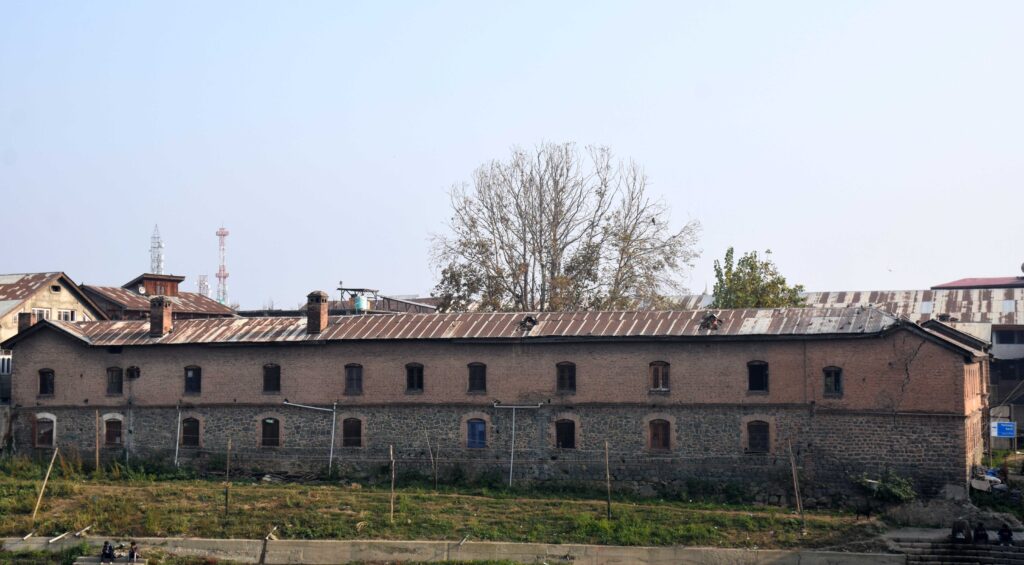At its prime, it housed many families of Ughyur, Kazakh and Yarkand origin.
Jaspreet Kaur
The two Sarais abutting Safa Kadal area of Downtown Srinagar – the Kak Sarai and the Yarkand Sarai – were rest houses (caravan sarais) built by the pre-partition government of Kashmir for the foreign traders coming from Central Asia. Kashmir maintained commercial and cultural relations with South Asia and Central Asia mainly through the Ladakh route since ancient times and served as the trading centre that connected multiple geographic areas.
As regards the volume of Indian trade with Central Asia via this route, it was considerably lesser in value than what passed through Punjab-Afghanistan-Central Asia or the Bombay-Batum sea routes.
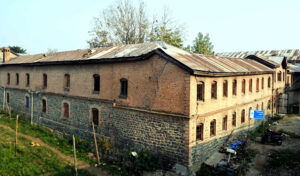
(Corner view of the Sarai from Safa Kadal Bridge. The building has developed many structural cracks.)
With the Anglo-Russian rivalry in Central Asia gaining intensity during the second half of the nineteenth century and the imposition of curbs on Indian imports by the Russian authorities in Central Asia, the Kashmir-Kashghar-Kokand route was further relegated to a secondary position so far as Indian trade with Central Asia was concerned. But the fact remains that the overland trade routes between India and Central Asia were important channels of communication between the two sides before the discovery of sea routes.
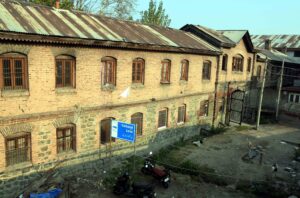
(J & K Tourism board of Yarkand Sarai on the entrance side.)
The Kashmir-Central Asia Route extended over the Zojila Pass which connected Kashmir with Ladakh, Baltistan, Tibet, China, and the Central Asian regions of Badakhshan, Samarqand, Khotan, Bukhara, Kashghar, Yarkand etc. More on this route and trade can be read in the travelogue Route from Kashmír, viâ Ladakh, to Yarkand by Ahmed Shah Naqshahbandi translated from Persian by J. Dowson.
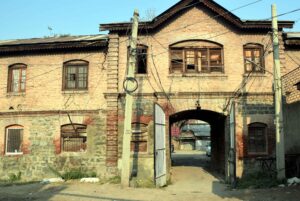
(Entry archway to the Sarai courtyard.)
According to historians, Yarkandis started coming to Kashmir around the time Islam made its way to the valley through Central Asia. They would travel in caravans/kafilas which would take them a month or more to reach Kashmir. To enable trade, and provide a rest house, the then ruler of Kashmir, Maharaja Pratap Singh, got the Sarai constructed in Safa Kadal. The foreign traders would hire a room at the Sarai.
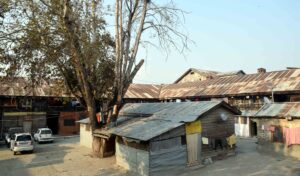
(Central courtyard has quarters for two families next to the Chinar tree.)
Traders from far away regions including Rawalpindi, Dras, Kargil, Leh, Yarkand and China would come to Kashmir via the Silk route. The Kashmiri traders would trade pashmina shawls, carpets, wool, stones, jewellery, dry fruits etc. with these traders. The caravan traders acted as the medium of exchange of art, culture, ideas and technology thereby assisting in the process of urbanisation. Due to its geographical proximity to Central Asia and linkage with the Silk Route’s system, Kashmir acted as an important transit emporium in the bilateral Indo-Central Asian trade.
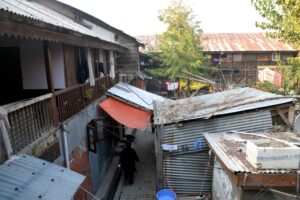
(Over the years extensions and repairs have been carried out by the occupants, demarcating their entries.)
The age-old building has been a major milestone of Kashmir trade in the eighteenth, nineteenth and early twentieth century. A rectangular peripheral building with a central courtyard in the middle was the main interaction centre for the caravans from Central Asia and the Kashmiri tradesmen. The Czarist-Bolshevik takeover of Central Asia and Chinese usurpation of the independent Yarkandugy or Xinjiang saw refugees coming to Kashmir from these places or tradesmen getting stuck in the Sarai after partition.
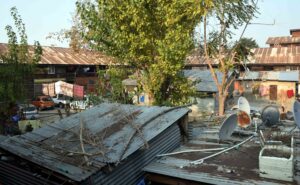
(Roof tops with dish antennas.)
This trade and cultural exchange through Sufis, poets, and artists continued for nearly 600 years. As the political geography changed in 1947, the trade through the Silk Route suffered. Some of the traders were stuck in Srinagar and eventually became natives of Kashmir. Post-partition, the caravan Sarai of the Silk Route became a place for the refugees of the great trade that had once flourished in the region.
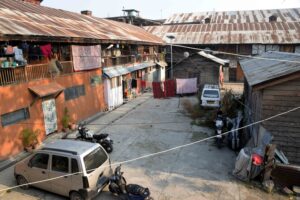
(A multifunction concrete parking area with sidewalks.)
At its prime, it housed many families of Ughyur, Kazakh and Yarkand origin. These were wealthy traders dealing in silk, parcha, brocade, fur and gold. Their food, which was staple of their regions, was different from the local Kashmiri cuisine. It mainly consisted of noodles (lagman), stuffed naan and kebab, kacha pacca (a dish of mutton and cauliflower), keema stuffed samosa and large breads.
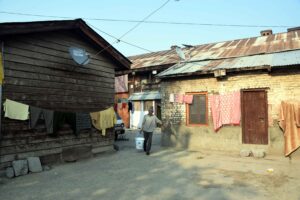
(A Ladakhi man carries a bucket of water to his house.)
Yarkandis started selling some of these delicacies on carts and a few opened bakeries. There have also been a few inter-marriages between the Yarkandis, as they were called, irrespective of the region they came from, and the local Kashmiris.
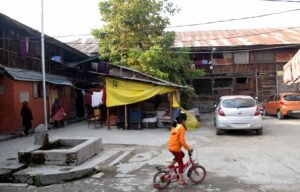
(Young girl cycles in the courtyard near the common water point. There are about 4 common water taps.)
In the mid-70s the Yarkandis shifted to Saudi Arabia, Turkey and US. There are now about 50 families left in the Yarkand Sarai who were asked to vacate the building earlier this year in March. As per the notice issued, the families are living there illegally. According to the authorities, the building has been declared unsafe while the lease granted to them for 12 years has also come to an end.
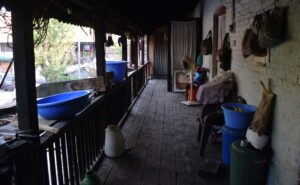
(Typical balcony/verandah access to the quarters.)
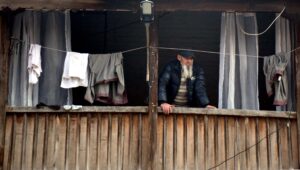
(An old man watches the children playing in the courtyard. The residents of the Sarai, 57 families in all, have features distinctly different from the Kashmiri locals.)
However, the families claim they have been living there for almost 66 years and no alternative arrangement has been provided to them.
Jaspreet Kaur is a New-Delhi based architect and urban designer. Photos by: Shah Jehangir


